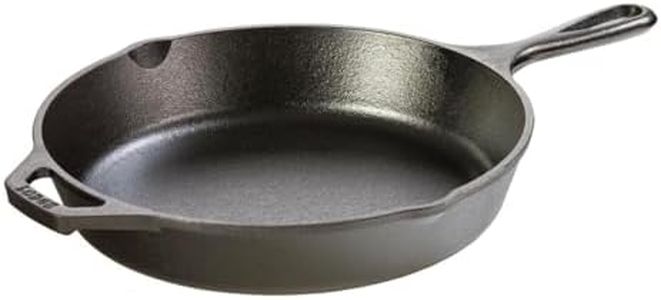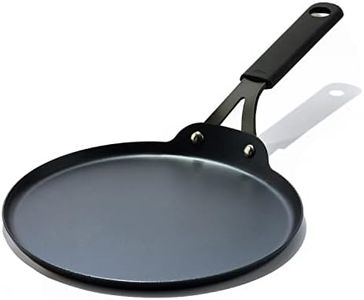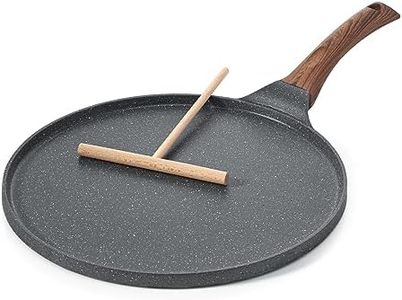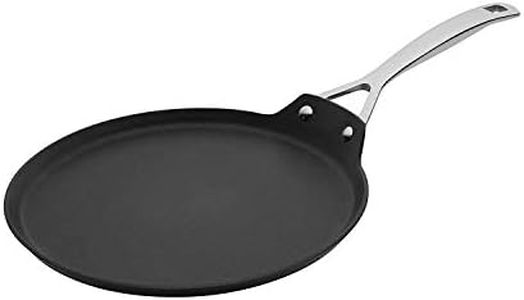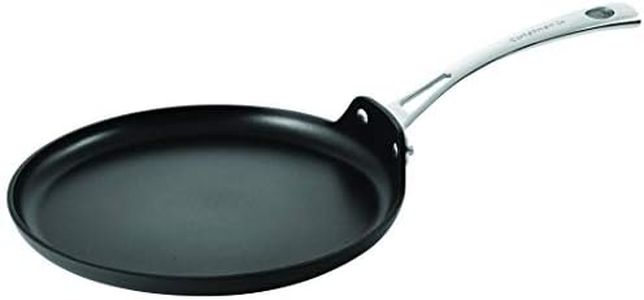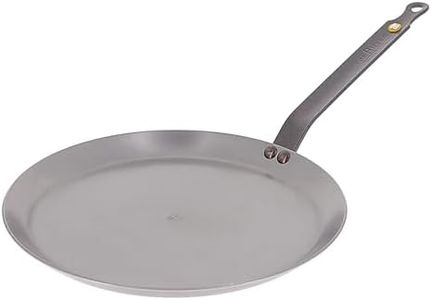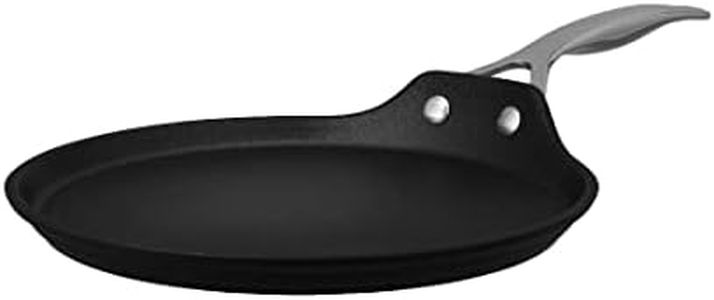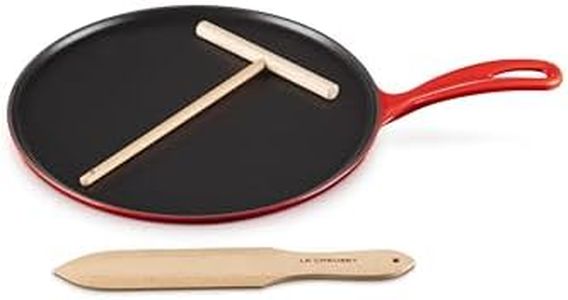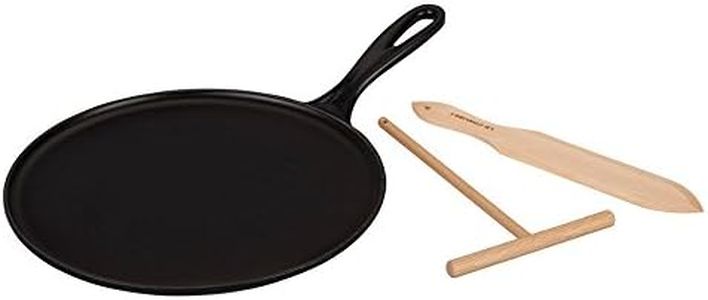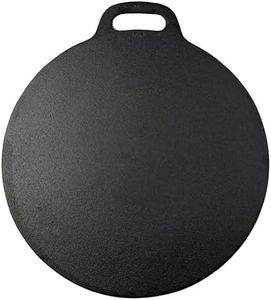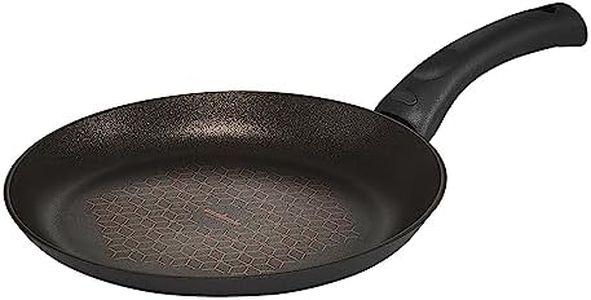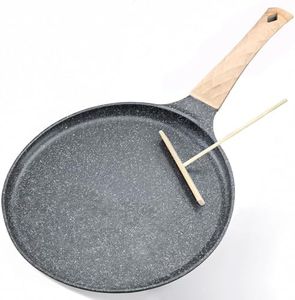We Use CookiesWe use cookies to enhance the security, performance,
functionality and for analytical and promotional activities. By continuing to browse this site you
are agreeing to our privacy policy
10 Best Crepe Pans
From leading brands and best sellers available on the web.Buying Guide for the Best Crepe Pans
Choosing the right crepe pan can make cooking thin, delicious crepes much simpler and more enjoyable. The perfect pan should heat up quickly, help you spread the batter evenly, and release the crepe without sticking. Thinking about how you plan to use the pan – whether for occasional brunches or regular meals – will guide you toward the best choice for your kitchen.MaterialThe material of a crepe pan affects how quickly it heats up and how evenly it cooks the crepe. Common materials are nonstick-coated aluminum, cast iron, carbon steel, and stainless steel. Nonstick pans are easy to use and clean, ideal for beginners or those who don’t want to fuss with a lot of oil. Cast iron and carbon steel get very hot and can give a crispier edge, but they may need seasoning and can be heavier. Stainless steel is durable but not naturally nonstick. If you want effortless cleanup and easy crepe flipping, nonstick is a safe choice for most home cooks. If you love the idea of a pan that builds character and lasts for decades, cast iron or carbon steel could be better, but they require more care.
DiameterThe diameter of the crepe pan determines the size of your crepes. Crepe pans usually come in sizes from about 8 to 12 inches. Smaller pans make crepes that are easier to flip and a good choice if you’re new to crepe-making or want to serve children. Larger pans allow you to make big, restaurant-style crepes to hold lots of filling. Think about who you’re cooking for and what size crepe feels right—if you want to serve substantial, meal-sized crepes, go larger; for snacks or desserts, small or medium might be perfect.
WeightWeight plays a role in how easy the pan is to handle. Lightweight pans heat up quickly and are easy to flip and move, but they might not cook as evenly. Heavier pans, like those made of cast iron, distribute heat well but can be more difficult to lift, especially when flipping crepes. For most people, a medium-weight pan offers a good balance: heavy enough to cook evenly, light enough to maneuver.
Handle DesignA comfortable, sturdy handle helps you tilt and swirl the pan so the batter spreads evenly. Handles can be made of metal, wood, or plastic. Heat-resistant handles are a plus for safety, especially if you like to cook at high temperatures. If you have smaller hands or less wrist strength, look for pans with ergonomic handles that are easy to grip and stay cool to the touch.
Edge Thickness and ShapeThe edge of a crepe pan should be low or gently sloped. This makes it simple to slide a spatula under the crepe for flipping. Thicker edges can make flipping tricky and might keep the crepe from spreading evenly. The best pans have thin edges that help you make round, flat, perfectly thin crepes. If crepe-making is new for you, low and thin edges will make the process much easier.
Oven SafetySome crepe pans can be used in the oven, which is handy if you want to finish a dish under the broiler or keep crepes warm. Materials like cast iron or all-metal pans handle oven use best. If you want versatility from your pan, check whether it’s oven-safe and to what temperature. This feature is less important if you only plan to make basic crepes on the stove.
